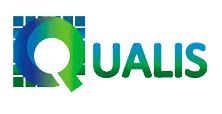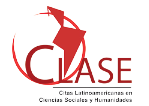Indicadores qualitativos para avaliação do potencial semântico de portais do conhecimento de universidades
DOI:
https://doi.org/10.5433/1981-8920.2023v28n1p1Palavras-chave:
Portais do conhecimento de universidades, Portais semânticos, Indicadores de potencial semântico, Recuperação da informaçãoResumo
Objetivo: Este estudo teve por objetivo propor indicadores qualitativos para a avaliação do potencial semântico de portais do conhecimento de universidades.
Metodologia: A pesquisa incluiu levantamento bibliométrico, análise sistemática e de conteúdo e pesquisa de campo com envio de questionário para coordenadores de TI das 69 universidades federais brasileiras, a fim de identificar as tecnologias e os recursos humanos disponíveis no portal de cada instituição. O tratamento dos dados foi efetuado mediante análise estatística descritiva e os indicadores foram validados por um painel de especialistas.
Resultados: O mapeamento da rede de portais universitários semânticos evidenciou os atores humanos e não humanos e suas inter-relações marcadas por laços fortes e fracos. Foi proposto um conjunto de 18 indicadores qualitativos construídos a partir de preceitos semânticos e sociotécnicos.
Conclusões: O conjunto de indicadores pode ser usado como instrumento de gestão, a fim de disponibilizar pesquisa semântica que facilita o acesso à informação relevante, além de favorecer a interoperabilidade e ações de comunicação e colaboração, contribuindo para a evolução dos portais do conhecimento de universidades como uma aplicação sociotécnica.
Downloads
Referências
ANDRADE, Gabriela Rieveres Borges de; VAITSMAN, Jeni; FARIAS, Luis Otávio. Metodologia de elaboração do índice de responsividade do serviço (IRS). Cad. Saúde Pública, Rio de Janeiro, v. 26, n.3, p. 523-534, mar, 2010. Disponível em: https://doi.org/10.1590/S0102-311X2010000300010. Acesso em: 15 fev. 2021.
AROUA, Essayeh; MOURAD, Aabed. An ontology-based framework for enhancing personalized content and retrieval information. INTERNATIONAL CONFERENCE ON RESEARCH CHALLENGES IN INFORMATION SCIENCE, 2017. Proceedings...Brighton, 2017.Disponível em: https://doi.org/10.1109/RCIS.2017.7956547. Acesso em: 15 fev. 2020.
BARDIN, L. Análise de conteúdo. 3. ed. Lisboa: Edições 70, 2011.
BENABDERRAHMANE, Sidahmed et al. Smart4Job: a big data framework for intelligent job offers broadcasting using time series forecasting and semantic classification. Big data Research, Netherlands, v.7, p. 16-30, March, 2017. Disponível em: https://doi.org/10.1016/j.bdr.2016.11.001. Acesso em: 10 nov. 2020.
BERNERS-LEE, Tim; HENDLER, James; LASSILA, Ora. The semantic Web: a new form of Web content that is meaningful to computers will unleash a revolution of new possibilities. Scientific American, New York, v. 284 n. 5, May, 2001
BIZER, Christian; HEATH, Tom; BERNERS-LEE, Tim. Linked data-the story so far. International Journal on Semantic Web and Information Systems, Hershey, Pennsylvania, EUA v. 5, p.1-22, 2009. Disponível em: http://dx.doi.org/10.4018/jswis.2009081901. Acesso em: 17 out. 2021.
BÖRNER, Katy et al. VIVO: A semantic approach to scholarly networking and discovery. Synthesis Lectures on the Semantic Web: Theory and Technology, San Rafael, California, v. 7, n. 1, p. 1-178, 2012. Disponível em: https://doi.org/10.2200/S00428ED1V01Y201207WBE002. Acesso em: 20 jul. 2021.
BURNS, Tom R. The sociology of complex systems: an overview of actor-system-dynamics theory. World Futures: the Journal of New Paradigm Research, Milton, United Kingdom, v. 62, n. 6, 2006, p. 411-440. Disponível em: https://doi.org/10.1080/02604020600798619. Acesso em: 22 set. 2021.
CALLON, Michel. Society in the making: the study of technology as a tool for sociological analysis. In: Wiebe Eco Bijker et al. (ed.). The social construction of technological systems: new directions in the sociology and history of technology. Cambridge, Mass: Mit Press, 1986. p. 83-103. (a)
CALLON, Michel. The sociology of an actor-network: the case of the electric vehicle. In: CALLON, Michel; LAW, John; RIP, Arie (ed.). Mapping the dynamics of science and technology. Houndmills: Macmillan Press, 1986, p. 19-34. (b)
CRESPO BORGES, Thomás. Respuestas a 16 preguntas sobre el empleo de expertos encruz la investigación pedagogica. Lima: Editorial San Marcos, 2007.
DONABEDIAN, Avedis. The methods and findings of quality assessment and monitoring: an ilustraded analysis. Ann Arbor, Michigan: Health Administration Press, 1985.
DUARTE, Mariana Machado Garcez; HARA, Carmem S. Otimização do mapeamento de consultas SPARQL para SQL. In: ESCOLA REGIONAL DE BANCO DE DADOS, 24, 2018, Porto Alegre. Anais ..., Porto Alegre, SBC, 2018.
EL HAJI, Essaid; AZMANI, Abdellah.; El Harzli, Mohamed. Multi-expert system design for educational and career guidance: an approach based on a multi-agent system and ontology. International Journal of Computer Science Issues (IJCSI), Mauritius, v.1 1, n. 5, p. 46-52, Sep 2014.
GIL, Antonio Carlos. Como elaborar projetos de pesquisa. 5. ed. São Paulo: Atlas, 2010.
GRANOVETTER, Mark. The strength of weak ties: a network theory revisited. In: Sociological Theory. San Francisco: Ed. Randall Collins, 1983. v.1. p. 2001-2233.
GRUBER, Tom. What is an ontology? 1996. Disponível em: http://www-ksl.stanford.edu/kst/what-is-an-ontology.html. Acesso em: 01 maio. 2021.
GUARINO, Nicola. Understanding, building and using ontologies. International Journal of Human and Computer Studies, London, v. 45, n. 2/3, p. 2, 1997. Disponível em: http://ksi.cpsc.ucalgary.ca/KAW/KAW96/guarino/guarino.html. Acesso em: 10 Jan. 2020.
GUEDES, Josefina A. S.; STRAUHS, Faimara do Rocio. Portais do conhecimento de universidades: um quadro referencial para avaliação de potencial semântico. Liinc em Revista, Rio de Janeiro, v.12, n.1, p. 166-179, maio 2016. Disponível em: http://revista.ibict.br/liinc/article/view/3667/3114. Acesso em 17 nov. 2021.
GUO, Kehua et al. SOR: An optimized semantic ontology retrieval algorithm for heterogeneous multimedia big data, Journal Computational Science Education, Durham v. 28, p. 455-465, 2018. Disponível em: https://www.sciencedirect.com/science/article/pii/S187775031730176X?via%3Dihub. Acesso em: 17 nov. 2021.
HUGHES, Thomas. The Evolution of large technological systems. In: BIJKER, W., HUGHES, T. e PINCH, T. The social construction of technological systems. Cambridge: The MIT Press, 1989, p. 51-82.
IYAMU, Tiko; MGUDLWA, Sibulela. Transformation of healthcare big data through the lens of actor network theory. International Journal of Healthcare Management, London, v.11, n.3, p. 182-192, 2018.
KOIVUNEN, Marja-Riitta; MILLER, Eric. W3C: Semantic Web activity. In: SEMANTIC WEB KICK-OFF SEMINAR IN FINLAND, 2044. Proceedings … Finland: Helsinki Institute for Information Technology, Nov. 2001.
LAST, John M. A dictionary of epidemiology. 2nd ed. New York: Oxford University Press, 1998.
LATOUR, Bruno. Ciência em ação: como seguir cientistas e engenheiros sociedade afora. São Paulo: Editora UNESP, 2001.
LAUSEN, Holger et al. Semantic Web portals - state of the art survey. Journal of Knowledge Management, West Yorkhire, v. 9, n. 5, p. 40-49, 2005. Disponível em: ttps://www.emerald.com/insight/content/doi/10.1108/13673270510622447/full/html. Acesso em: 17 nov. 2021.
LAW, John. Notes on the theory of the actor network: ordering, strategy and heterogeneity. Lancaster, Lancaster University, 1992.
LAWAN, Abba; RAKIB, Abdur. The semantic Web rule language expressiveness extensions-a survey. Arkiv.org, Malásia, arXiv preprint arXiv:1903.11723, 2019.
LI, Huankang et al. An optimized approach for massive web page classification using entity similarity based on semantic network. Future Generation Computer Systems, Amsterdam, v. 76, p. 510-518, 2017. Disponível em: https://www.sciencedirect.com/science/article/pii/S0167739X17303321?via%3Dihub. Acesso em 17 nov. 2021.
MAATOUK, Yasser. Building AIPedia ontology to evaluate research impact in artificial intelligence area. Academia Letters, August, 2021. Disponível em: https://doi.org/10.20935/AL2781, 2021. Acesso em 20 set. 2021.
MAEDCHE, Alexander. et al. SEAL - a framework for developing semantic portals. In BRITISH NATIONAL CONFERENCE ON DATABASES, 18, Proceedings…Oxford, UK, LNCS Springer, July, 2001. Disponível em; https://dl.acm.org/doi/10.1145/500737.500762. Acesso em: 18 nov. 2021.
MALHOTRA, Meenakshi; NAIR, T. R. Gopalakrisnan. Evolution of knowledge representation and retrieval techniques. International Journal of Intelligent Systems and Applications, Hong Kong, v. 7, n. 7, p. 18-28, Jun 2015.
MALHOTRA, Naresh K. Pesquisa de marketing: uma orientação aplicada. 7. ed. Porto Alegre: Bookman, 2019.
MARCONI, Maria Andrade.; LAKATOS, Eva Maria. Técnicas de pesquisa. 7. ed. São Paulo: Atlas, 2010b.
MASNER, Jan et al. Creation, storage and presentation of information content - semantics, sharing, presentation, and archiving. Agris On-line Papers in Economics and Informatics, Czechia, v.11, n. 1, p. 75-82, March 2019. PRO NA REV
NGO, Vuong M.; CAO, Tru. H. Ontology-based query expansion with latently related named entities for semantic text search. ArXiv.org, Ithaca, N.Y, v.1, p. 1-12, 2018.
NGUYEN, Phuong T. et al. An automated approach to assess the similarity of GitHub repositories. Software Quality Journal, Andover, U.K., v. 28, n. 3, p. 1-37, 2020.
NIELSEN, J. Projetando Web sites. Rio de Janeiro, Editora Campus. 2000.
NIELSEN, Jacob.; LORANDER, Hoa. Usabilidade na Web: projetando websites com qualidade. Rio de Janeiro: Elsevier, 2007.
OPEN KNOWLEDGE INTERNACIONAL. Disponível em https://okfn.org/opendata/how-to-open-data/. Acesso em 23 jan. 2022.
REYNOLDS, Dave; SHABAJEE, Paul; CAYZER, Steve. Semantic Information Portals. New York, ACM, 2004. p.290-291. Disponível em: https://dl.acm.org/doi/abs/10.1145/1013367.1013440. Acesso em 08 maio. 2020.
SHIM, Yonwoon; SHIN, Dong-Hee. Analyzing china's fintech industry from the perspective of actor-network theory". Telecommunications Policy, London, v. 40, n. 2/3, p. 168-181, 2016.
SILVA, Renata; SANTOS, Plácida, FERNEDA, Edberto. Modelos de recuperação de informação e Web Semântica: a questão da relevância. Inf. Inf., Londrina, v. 18, n. 3, p. 27 - 44, set. / dez. 2013. Disponível em: https://www.uel.br/revistas/uel/index.php/informacao/article/view/12822. Acesso em: 29 out. 2021.
STANESCU, Nicolae G. A smart approach for e-learning domain: the use of business models and semantic technologies. Informática Econômica, Bucharest, v.22, n.2, p. 68-80, 2018. Disponível em:https://www.proquest.com/docview/2067316838/fulltext/A778C2CF1C154A46PQ/1?accountid=146694. Acesso em 29 out. 2021.
TRIOLA, M. F. Introdução à estatística. 12. ed. Rio de Janeiro: LTC, 2017.
WALSHAM, Geoff. Actor-network theory and IS research: current status and future prospects. In: LEE, A.; LIEBENAU, J.; DEGROSS, J. (eds) Information systems and qualitative research. Boston, MA: IFIP - The International Federation for Information Processing, 1997. DOI:10.1007/978-0-387-35309-8_23. Disponível em: https://www.semanticscholar.org/paper/Actor-network-theory-and-IS-research%3A-current-and-Walsham/1e963eb52b2d5f65003093944c77080a6e632ba8. Acesso em: 02 out. 2020.
WIMMER, Hayden; YOON, V.; RADA, Roy. Integrating Knowledge sources: an ontological approach. International Journal of Knowledge Management, Hershey, Pa, v. 9, n. 1, p. 60-75, 2013.
W3C. Standards. Disponível em: <http://www.w3.org/standards/>. Acesso em 13. mar. 2022.
Downloads
Publicado
Como Citar
Edição
Seção
Licença
Copyright (c) 2023 Informação & Informação

Este trabalho está licenciado sob uma licença Creative Commons Attribution 4.0 International License.
A revista se reserva o direito de efetuar, nos originais, alterações de ordem normativa, ortográfica e gramatical, com vistas a manter o padrão culto da língua e a credibilidade do veículo. Respeitará, no entanto, o estilo de escrever dos autores. Alterações, correções ou sugestões de ordem conceitual serão encaminhadas aos autores, quando necessário.
O conteúdo dos textos e a citação e uso de imagens submetidas são de inteira responsabilidade dos autores.
Em todas as citações posteriores, deverá ser consignada a fonte original de publicação, no caso a Informação & Informação.














